As an Amazon Associate I earn from qualifying purchases.
When life gives you gizzards, you need to learn how to clean gizzards. Amiright? Yeah, yeah, I can hear you thinking: “Ew, why would I eat that?”
Because they’re good. One of the more unloved giblets, gizzards are both an internal organ and dense nuggets of deep burgundy meat. That’s right, I said meat. A gizzard is made of muscle, just like the breast or thigh meat. You just have to get to it first.
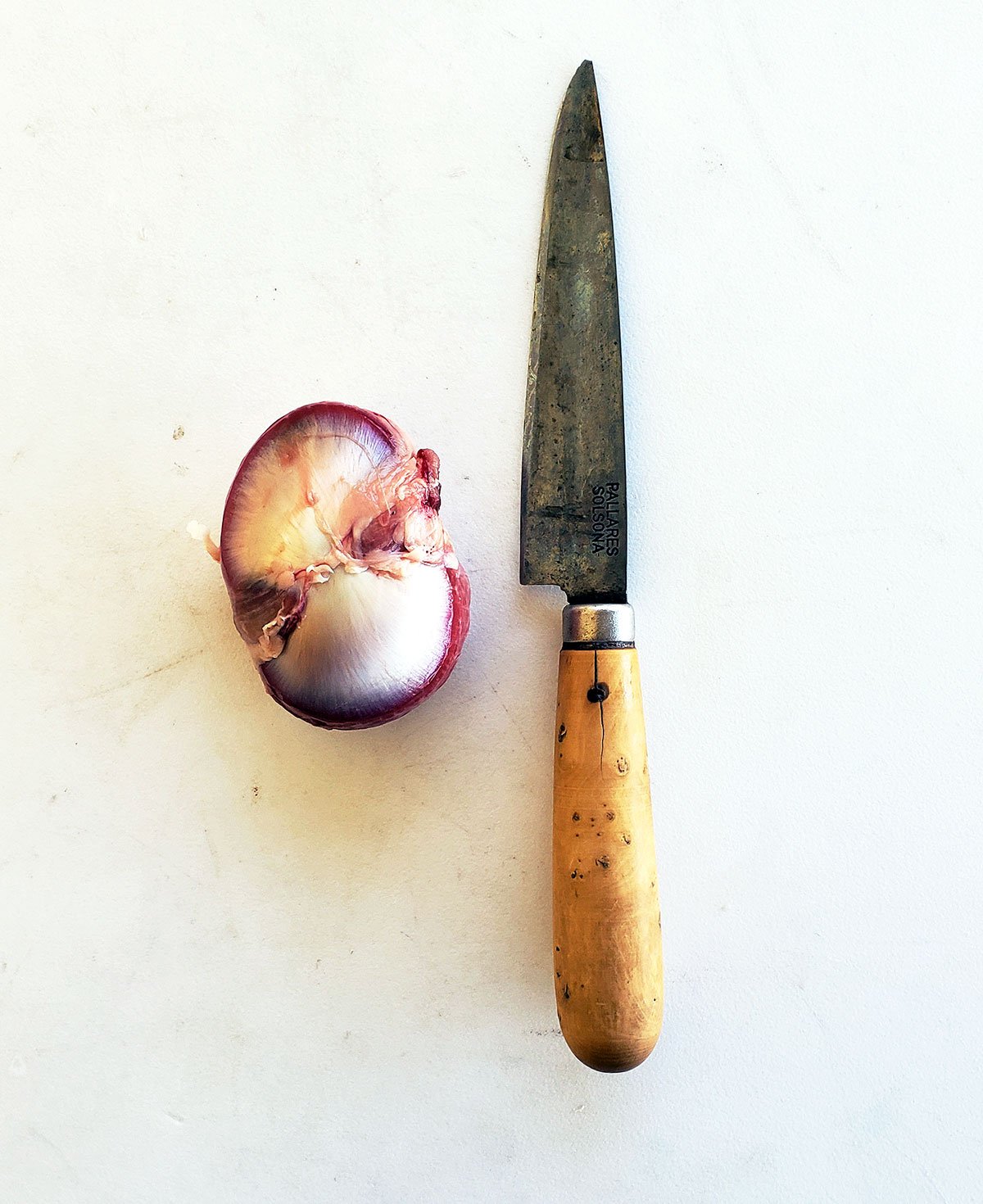
Most gizzards are sold partially cleaned — you normally only need to remove the silverskin membrane on either side of the meat nugget before you put them in the pot or fry them up. But what if you get a whole gizzard? It happens a lot in Asian markets, where they sell them just as they come out of the bird. And of course hunters get whole gizzards with every bird we bring home.
Cleaning gizzards is a necessary skill both for hunters and for those interested in nose-to-tail eating. So here’s how to clean gizzards.
It’s stupid easy. So easy, I need to tell you a quick story first. Years ago, when I was writing my cookbook Duck, Duck, Goose, I included instructions on how to clean duck gizzards. These instructions had you split the gizzard, carefully clean out all the grit, and then slice the grinder plates away.
When I toured to promote this book, I did some cooking demonstrations. At one, I was cleaning gizzards. A woman from Arkansas piped up. “I don’t mean to be rude, but…” No, go ahead, I said. “Well… that’s a stupid way to clean gizzards.” She was embarrassed to call me out, but I was all ears. Only idiots are set in their ways.
So she stood up, took a gizzard, and with two quick slices, had it cleaned. Dayum! Well, hell, I said, that’s much better!
And so here you go.
Take a small sharp knife and slice the two lobes of meat off the grinder plate. The only things you need so remember are that one lobe is almost always larger than the other, and that they arc over the grinder plate, so you slice not straight down, but in an arcing motion to get the most meat.
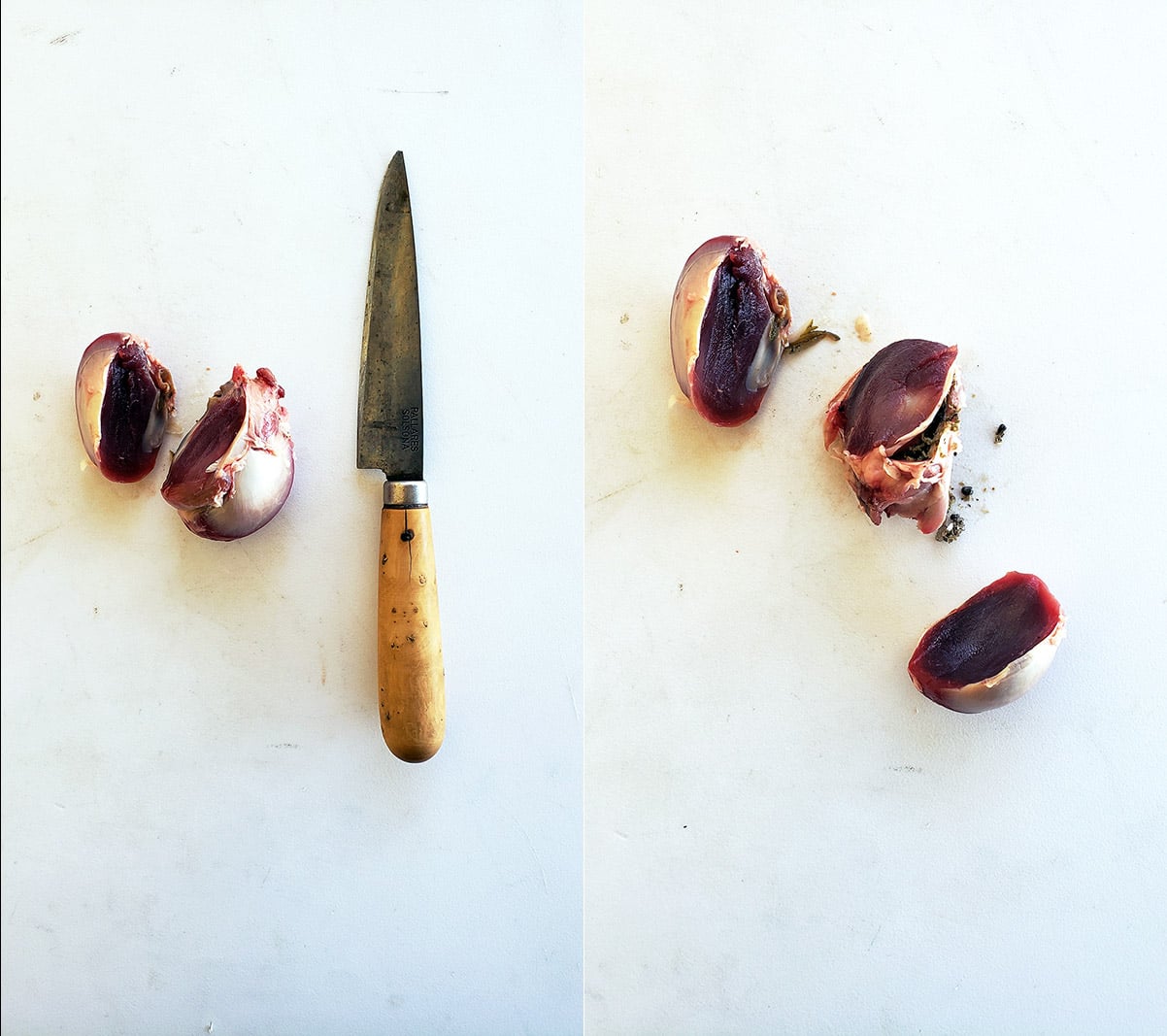
There. That’s how to clean gizzards.
What about the silverskin? Well, you don’t really need to care about it if you are cooking them all day in a crockpot, which is what I mostly do. The silverskin melts away and you don’t notice it after many hours of slow cooking.
That said, fried gizzards are a thing, and I’ve even made gizzard carpaccio, which was weird, but very good. In that case, you need to remove the silverskin. This is easy. Use the tip of the knife to dislodge where it attaches at the outer end of the lobe — farthest away from where you sliced it off the grinder plate — then use the edge of the knife to scrape it straight down to the base.
Then, a quick slice and it’s out of your life.
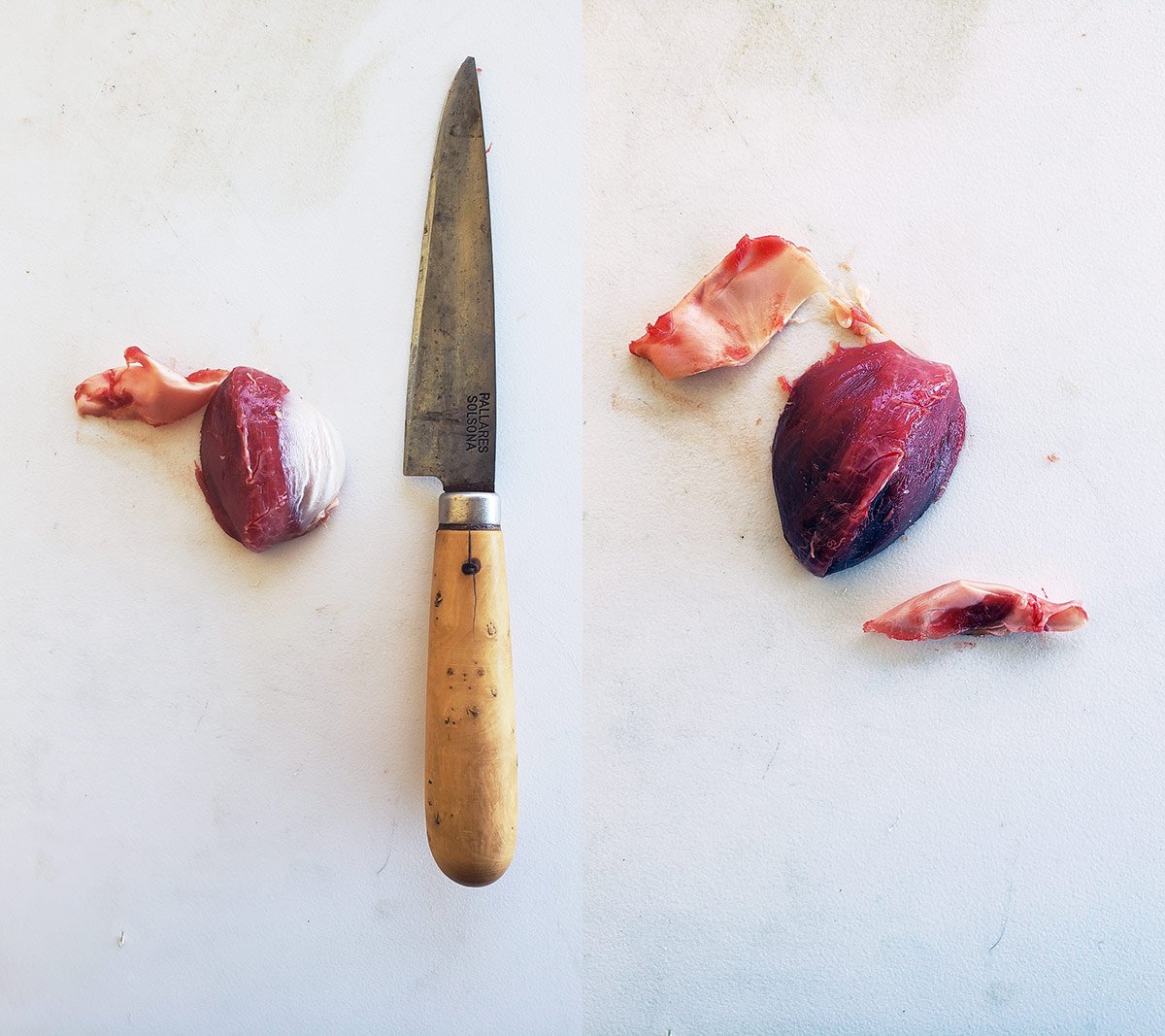
Super easy. Pro tip: Wait to remove silverskin on gizzards until you are ready to cook. It comes off way easier from a thawed gizzard than a fresh one.
Now that you know how to clean gizzards, what do you do with them? Hands down the best way to cook gizzards is to slow cook them. I prefer to cure them exactly like my corned venison, then cook them in homemade duck stock (or any stock, really), in a slow cooker for… wait for it… 24 hours.
Why this long? Because then you can squash the gizzards with a fork. And they taste almost exactly like corned beef. Seriously. Here is how I love to make corned gizzards. Follow the technique in that recipe and you can modify the ingredients to suit your taste.
Different gizzards cook differently. Mostly I work with duck and pheasant gizzards, and can accumulate lots of them, vac sealed in the freezer, for meals. Goose gizzards, as well as turkey gizzards, can be huge.
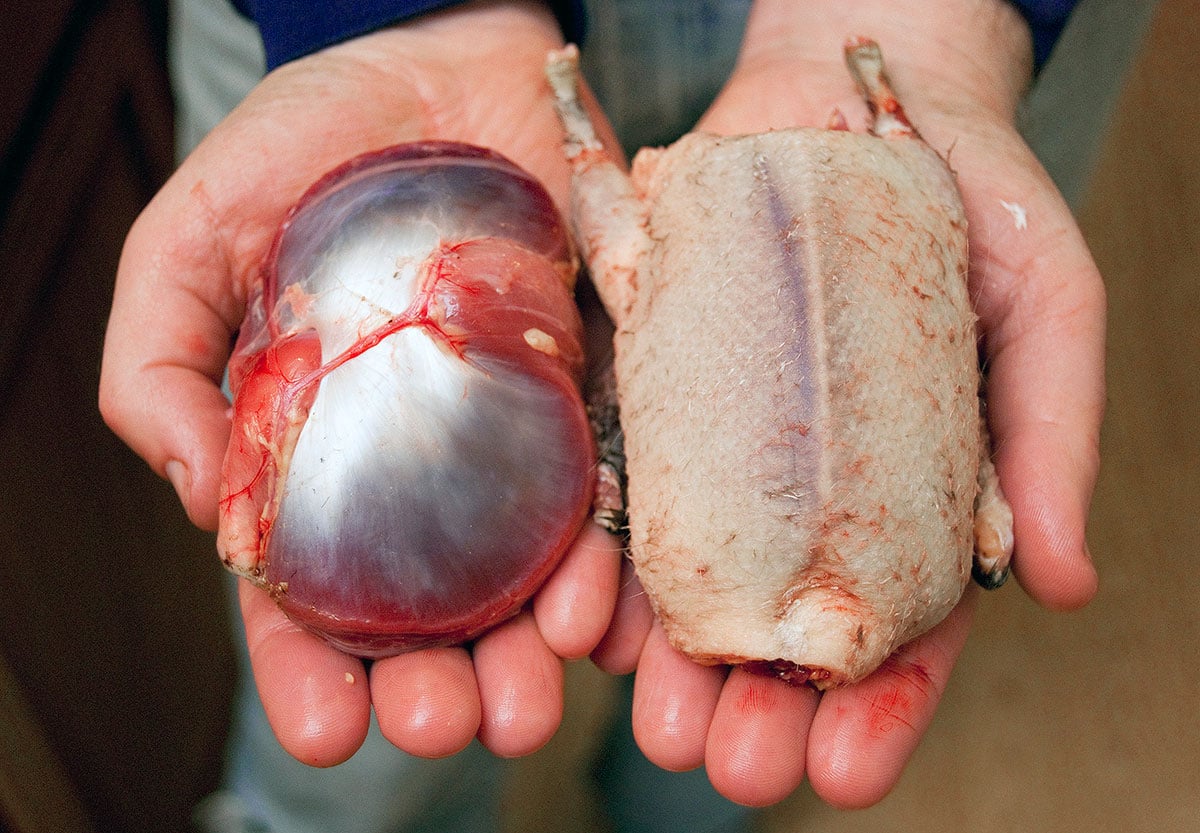
See that? That’s a snow goose gizzard next to an entire hen teal. Crazy, eh?
You can certainly corn or confit these the way you would smaller gizzards, but I often grind them. It’s a lot of good, healthy meat to add to a grind pile for whatever you want to make, from picadillo to meatballs to my all time favorite: Giblet bolognese sauce.
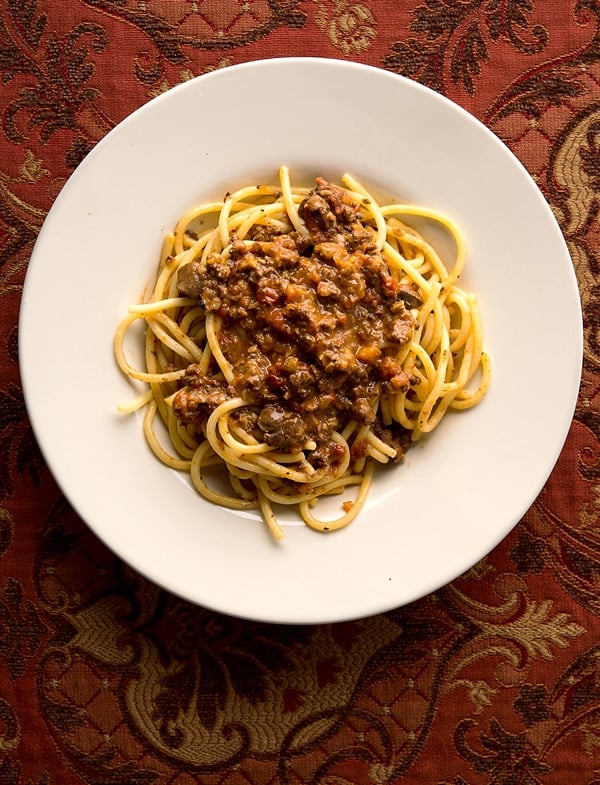
Yeah, you want to make this. Yes you do.
Now that you know how to clean gizzards, you can.

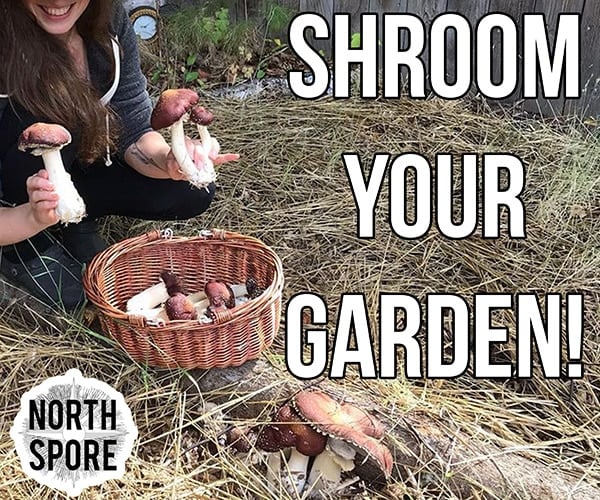




Thanks Hank, this is an excellent video. I just got about 20 chicken gizzards from my CSA because no one else wanted them and this made cleaning and prepping them a snap! I’ll recommend it to others – but maybe then I won’t get so many of them next time….
Hi Hank,
One day i cooked the gizzards and didn’t peel the grey skin. I cleaned it with water to rinse all the inside and i slowly cooked it for 4hours. The gizzards where divine but the broth had a bitter taste. Is it safe to eat the broth?
Thank you for your video.
hi,
That was a great video. I wanted to add however that they do not come so clean in the supermarket. In fact, they come with all of the silver skin and even the inside of the stomach lining which is in fact much tougher than the outter silver skin. I just got done cleaning a bunch of it and was hoping that you would have demonstrated cleaning off that too. Anyway, that was pretty good 🙂
I might have to get some turkey gizzards and try your cleaning method. It would open up the possibility of using the meat in other recipes if it were all meat. As is, I normally buy chicken gizzards and leave the edges and silverskin on…using them for stewing (with carrots, onions, potatoes, and a spicy seasoning) or frying.
Though that yellow stuff (what you called a grinder plate, I believe) is something else. I’ve rushed and not inspected and removed this portion in store bought/prepped gizzards and gotten a cruel surprise when I took a bite. Pure bile. Absolutely disgusting. I’ve heard some cultures actually drink or flavor their food with bile, but I can’t see it. It’s vile.
Jeni: It’s from a snow goose.
Wow Hank, That is a mighty big gizzard in your hand. Can you tell me what bird it came from??
Thank you for the informative video. I hunt wild turkey and their gizzards are huge! Like others I also saved the giblets from my homegrown chickens. (woohoo!, its a new revolution!) I will stop throwing them in the soup pot now and try some of your recipes.
I love this web site. We eat meat from the field and forage for other goodies from nature and this site inspires me. Nothing says satisfaction like taking your own food from harvest to platter. And doing it beautifully is an art.
I clean all the wild turkey gizzards that come my way, and they’re as great as Hank says.
I really like making giblet gravy so I save the neck, gizzard and liver of every turkey I kill, vacuum packed. When you get that winter craving (like, right now) for really good gravy, defrost your giblet pack (gizzard cleaned before vacuum freezing) and boom, you’re off to the races.
I also include the heart in the pack, if I haven’t already fried it up for a quick snack.
“Trim to get just the meat.” So many people don’t understand all the different parts of the meat. Chris Cosentino’s vid about butchering a beef heart is also well worth watching. See: https://www.offalgood.com/videos/how-to-butcher-a-beef-heart Thanks, Hank. This is really useful.
Hank: well done. I agree with others: the quality of the video is great. Can’t wait for more instructional videos from you.
Fantastic quality on your video! Well done!
I am just waiting for a longer video that shows you actually cooking.
Have you ever thought about showing you in the field hunting the game, then prepping the meat, then cooking? This would be awesome to watch!
How do I love gizzards, let me count the ways. Only I’ve never cleaned my own. The video was great, keep them coming.
Great video!
We process our homegrown chickens ourselves. For the gizzards, we slice around the circumference of the gizzard about halfway, and then open it like a book. The grinding plate peels out in one piece, just using your fingers to separate it from the muscle.
You’re right – there’s more than one way to skin a gizzard! 🙂
Nathan
I use thumbs too, but you gotta cut that silverskin off! For storage, I vacuum-seal, but in a pinch I do what my father in law does. After a sea duck hunt he’ll clean the birds and toss the gizzards in a container with water to freeze for future use.
Nice work on the video Hank…I’ll be sure to pass along to the offal haters I hunt with. Looking forward to more.
B
My husband does like Sharon mention, peels the gritty part out with his thumbs. He’s really quick about it. I have not mastered the trick yet, but as I’m processing about 25 birds in a couple of weeks, I expect I’ll get the hang of it sooner or later.
Diana: Glad I can help! Properly cooked, i like gizzards a lot, so anything I can do to encourage others to eat them is a good thing, IMHO.
Sharon: I figured there’d be more than one way to skin a gizzard. You like the edges? I find them a littel gooshy for me.
Adam: I like to clean before freezing, but I am usually so tired after hunting I vacuum-seal them whole. They store pretty well that way. If you vac-seal the gizzards, they don’t get freezer burn. So yeah, in a perfect world I would clean, then freeze. But freezing whole works almost as well.
Hank,
I noticed that you are freezing your gizzards whole. Do you prefer that rather than doing an initial cleaning—get the grit out, maybe peel out the membrane—before freezing? I’m wondering if keeping them whole may actually reduce freezer burn, and you can pretty much ignore the contents as the interior is protected by the koilin lining which gets removed anyway.
Very nice first video Hank. Keep them coming.
Hey Hank, I don’t do what you do at all.
#1, I slice through around the sack and pull the halves open and peel that sucker out, full of grit. It usually comes out very cleanly.
#2, I LIKE the edges — no trimming there.
And #3, the silverskin? Well, I suppose I could be a little more anal about that.
PAD: People are different.
Sharon
Awesome. I am now inspired.
will try this the next time I get my hands on a gizzard.
Very cool – thanks, Hank!
Thank you for this video. Last year I harvested my first broilers that I raised myself. After cleaning out the inside cavity I got rid of all of the gizzards. I hated doing it and I still feel horrible about it. Now that I’ve seen your video, this year I’m definitely saving them all. Another great post!